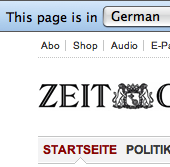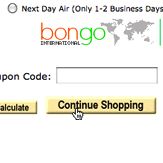Prefixing the intriguing part of the headline with a context helps draw in the user while still offering information scent.
Writing headlines for online editorial content can be a daunting task with conflicting advise.
On the usability side people like Jakob Nielsen argue that you must front load information scent in your headlines. The goal is to convey as much useful information on what the article will be about so the user can make an informed decision on whether that is the right page or not. However, these headlines often end up so dull that nobody wants to open the article at all (unless they already know and trust the source).
On the other hand, copywriters like Brian Clark claim that the purpose of a headline is to lure in visitors, e.g. “What Everybody Ought to Know About Writing Great Headlines” or “The Secret for Writing Better Blog Post Titles”. While intriguing, these headlines contain little information scent (and it’s almost never front loaded), and the content-to-noise ratio is often quite bad. In the first example 7 out of 9 words are ambiguous words that would fit any article.
One important thing to consider is that most people will read your headline outside the context of your site. Maybe they see it as a newsletter subject line in their mailbox, or maybe they find you in a search result, or they see your article re-tweeted on Twitter, or stumble upon it in a “useful resources” link collection, and so on.
An article headline will often be used outside the site’s context – so do your headlines make sense when read on an external site such as Twitter?
This has a significant impact on how you should write headlines. In essence, your headlines must be meaningful outside the context of your site. So you can’t assume that people know your site is about “web usability”, or “bulldog breeding”, or “emerging markets”, etc. You have to make an effort to try to make you headline understandable without this context.
Provide Context, Then Spark Interest
But how do you do this in practice if you also want an “attention grabbing” headline that spark interest? An approach we’ve found useful is the style of: [Context]: [Spark interest]
An example of this approach is one of our earlier articles titled “Form Field Usability: Avoid Multi-Column Layouts”.
We set the scene with a context: “Form Field Usability”, and then go on to spark interest: “Avoid Multi-Column Layouts”. Context is pre-fixed and then interest is sparked.
If we’d written this headline entirely the copywriter’s way it might have been something like “The Little Told Secret of Why You Should Avoid Using Multi-Column Layouts”, which is certainly an interesting headline, but it also comes with some severe drawbacks:
- No context – The headline can easily be misinterpreted outside the site’s context. Does it mean you should avoid multi-column layouts when writing a paper in Word (wrong)? Or when designing a sales brochure (wrong)? Or when designing a checkout process (correct)?
- Poor scannability – The headline is difficult to scan when presented along with 9 other search results, as it requires you to read the entire headline before it makes sense.
By pre-fixing the headline with a context, you not only avoid ambiguity you also improve scannability.
Here’s some more examples of headlines we’ve previously written in this style:
- A/B Testing: Begin with a Problem and Hypothesis
- E-Commerce Usability: Exploring the Customer’s Checkout Experience 2011
- Readability: the Optimal Line Length
- HTML5: Anchor Content, Not Anchor Text
Granted, this technique shouldn’t be your only UX writing style, but the next time you are writing a headline consider that it might be read outside your site’s context and give this method a try.
Do you have other ways of front loading information scent while keeping your headlines interesting?






